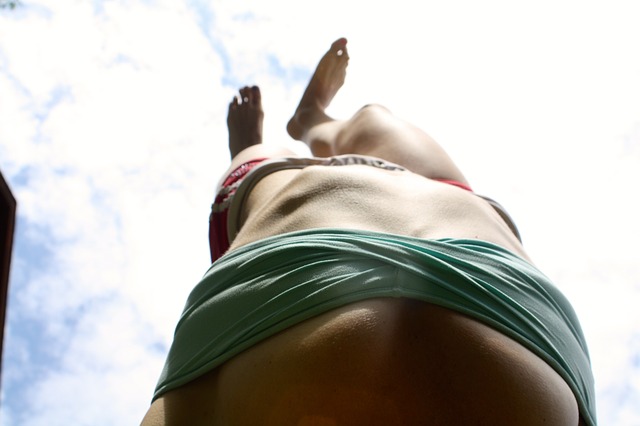
If you are ready to step foot into the world of Yin yoga, you have come to the right place.
Yin yoga is a slow-paced, meditative form of yoga that is steadily gaining recognition in the Western world. And for good reason! Evidently, it has been practiced for thousands of years according to the ancient yogic texts and is not a foreign yoga style in the East.
Yin yoga is a wonderful complement to more vigorous styles of yoga, such as Power Vinyasa, and for that reason many yogis incorporate it into their overall yoga practice. Unlike the powerful, active styles of yoga that are popularized today, Yin yoga offers us practitioners an element of softness, stillness, and intimacy that we may not capture in a hot, sweaty Vinyasa class or any other physically demanding style of yoga.
Personally speaking, I will throw a bi-weekly Yin yoga class into my practice, as I believe it offers a totally new way of reaching into my deeper connective tissues and soothing the corresponding tightness, pain, and/or dampened flexibility in each corresponding area of my body.
I used to be so accustomed to pushing my body to its limits, associating a powerful yoga practice with blood, sweat, and tears. I would only seek out the loudest, dynamite teachers in the game, never giving my overworked body the chance to chill out. The hotter and faster a class, the better. Slowing down made me uncomfortable and nervous, as I was flooded with every emotional wound, thought, and fear imaginable. It was so much easier to distract myself from myself through such bold, highly socialized classes.
I am sure that many of you can relate. I kept putting off Yin yoga, totally unsure how it would make me feel. It wasn’t until I was in utter exhaustion that I sought it out, finally getting out of my comfort zone. I deserved to rest and to listen to my body’s pleas for quietude.
Our bodies aren’t machines, and there is actually a great deal of benefit in healing and restoring the body via Yin yoga—giving our bodies a chance to simply be still. I do not need any scientific-based proof to defend Yin yoga, as the proof lies in the way my connective tissues and joints respond when I add it into the mix.
I cannot forget to mention all of the ways it settles the cacophony in my mind and alleviates my hyperstimulated nervous system. Everything slows down and for that facet alone, I cannot get enough of it. You will come to find the ways in which it affects your mind as well. It has a depth that isn’t found in yang like yoga practices.
However, most newer yoga practitioners haven’t even heard of it until they do a bit of exploring. When and if you decide to try Yin yoga, it is very possible that you may come across a number of questions, concerns, and observations that leave you confused or uncomfortable. Or perhaps you will wind up in a state of sheer curiosity or fascination, eager to discover more. The teacher that is leading your Yin yoga class may touch upon a few of your questions, but chances are that there will still be circulating mystery surrounding this passive, soulful form of yoga.
Therefore, I am here to humbly address a number of your questions below:
1. Is Yin yoga for Everyone?:
Yes, anyone can practice Yin yoga, but just be aware that those of us who are more grounded and flexible in our natural state will have an easier transition into this style. Do not give up if you stumble upon discomfort in the prolonged postures you are holding. This aspect served torturous for me at first, especially in hip openers like Frog Pose but I did my best to make peace with the uneasiness. Simply do what you can to be still and let go of the varying sensations that come up, treating them in a similar fashion to the flow of thoughts that come and go in your mind.
Forceful exertion in a particular pose is not a safe decision because it can lead to injury, especially if repeatedly done. Let’s try to approach our practice from an intuitive, aware place in which we listen to our bodies and back out if piercing, overbearing pain takes the front seat.
Also, we can learn to differentiate between tolerable, yet challenging discomfort and actual concern. That is an inside job that we are responsible for, not our teachers. They can only offer up suggestions and props to assist us in our practice, but they are not mind readers or living in our physical bodies. As long as we stay attuned to what our bodies are saying to us, there should be no issues with trying Yin yoga and developing a close relationship with it.
2. What Do I Focus on When I am in a Pose?:
The poses we hold in Yin yoga can last up to several minutes, and we are left with a large chunk of time to be with each pose and the corresponding sensations that surface. It isn’t a piece of cake, I know! Unlike the one breath, one movement vinyasa flows that characterize many active styles of yoga, Yin yoga serves up a completely disparate experience.
It is common to give power to the very sensations that seemingly take over our bodies in the wake of these postures. And these sensations aren’t always pleasant. That is why it is best to let go of the tension we may be gripping onto as a result and simply find peace in the discomfort. This same philosophy can be applied to life outside of the yoga mat as well.
When I personally find myself in a mental funk of sorts, I do my best to accept my rather cynical, irrational thoughts and respect their purpose. The harder I resist, the more intense they become. After many years of fighting against my mind, I have let go of the struggle.
The same approach can be utilized in our Yin yoga practice. As a suggestion, I recommend closing your eyes and bringing to mind an intention of stillness, serenity, or acceptance, and letting that theme characterize your entire practice. Or anything else that alleviates any feelings of agitation that may knock on the door amidst your lengthy holds.
Remember that there is no one mandatory formula for staying in a pose, and it is up to each one of us to focus on what best serves our bodies and minds. Again, the overall point is to treat our amazing physical vessels with the attention and protection they deserve. If at any point we sense that a pose is doing more harm than good, we can simply back out of it with ease and nonjudgment. We are our own best teachers, my fellow yogis.
3. How Important is my Alignment?:
Yin yoga isn’t an alignment focused, external practice since most of its emphasis is on an internalized, experiential happening. This is going back to the idea that we are our own greatest teachers. The intention of Yin yoga postures is to deepen the target areas in mind by inviting in a stretch or compression to a specific area.
However, not all poses result in the same outcome for every student. For instance, in a pose such as Half-Pigeon, the majority of us may experience the focal point of our sensation in the lateral hip, while another fellow student may sense a whole lot of pain going on in the knee, the back hip flexor, or lower back as a result.
We never know what each individualized student will endure in a pose. Therefore, the teacher may offer up props or adjustments to assist the student in finding a happy medium that is more so challenging than impossible to bear. By and large, alignment is in accordance to each student and acts on a case by case basis.
Speaking from my own experience, I do not always respond in an identical way to every Yin posture, as every day is totally different. I may be super sore from one too many sessions of cycling one day or noticing slight pain in my lower back on another day. I always adjust accordingly and place my safety above all else. There is no one-size-fits-all guideline that works for a subjective, intrinsic practice like Yin yoga.
4. How Active should the Pose Be?:
Yin yoga poses, unlike usual Hatha yoga poses which target our moving muscles, and focus on the less mobile connective tissues in our joints. Additionally, they are usually done lying down or seated and are not nearly as active as the dynamic, heat-building poses that make up vinyasa or hatha yoga forms. There is a deep relaxation that occurs with the muscles that surround our joints in order for there to be a deep dive into the connective tissues that are present around our joints.
In essence, Yin yoga is a stretch for our connective tissues and requires long, sustainable holds in order to safely and efficiently do so. In time, our connective tissues will strengthen. Keep in mind that the point isn’t to fortify the muscles here, as that is what happens in active forms of yoga.
Now that you have some of your questions answered, you can begin Yin yoga with a smile. What are you waiting for? In the busy world we live in today, it is such a gift to slow down and just be. That is where Yin yoga comes in and will hopefully grant us an opportunity to set aside distractions, racing movements, and merely settle into the sacred stillness that comprises each moment.
One pose at a time, we have everything in our disposal to enjoy this special, soft practice and take what we learn on the mat out into the world.
~
~
~
Author: Shirin Karimi Tararani
Image: Pixabay
Editor: Travis May








Read 0 comments and reply